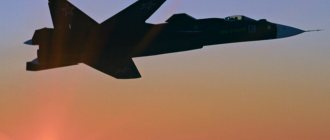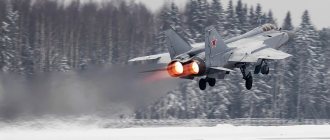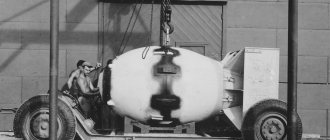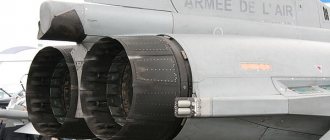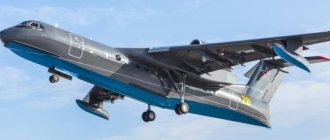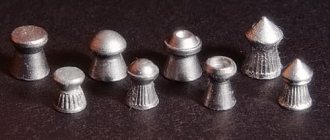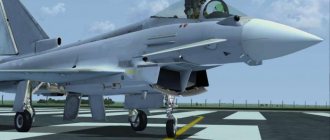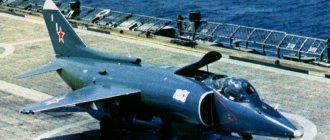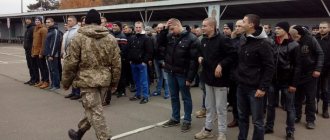Description of the Su-17 design
The Su-17 fighter-bomber is an all-metal monoplane, made according to the classic aerodynamic design with a mid-wing arrangement. The aircraft is equipped with a single engine, has a landing gear with three struts and a wing that can change its sweep in the range from 30 to 63°. The vehicle is piloted by one pilot.
The Su-17 is designed to destroy ground, air and surface targets, as well as for reconnaissance.
The Su-17 chassis is three-post, with a single cylinder on all wheels. To reduce the flight length, the Su-17 is equipped with a braking parachute.
Different modifications of the fighter-bomber differed in their on-board equipment. The Su-17MZ (one of the most popular modifications) was equipped with the KN-23 sighting and navigation system, consisting of a Klen-PS laser rangefinder, an ASP-17BTs-8 rifle-bomber sight and an RV-5 radio altimeter.
The Su-17 was equipped with a turbojet engine with an afterburner (TRDF): AL-21F3 or R-29BS-300.
Aircraft of all modifications of the Su-17 were armed with two 30-mm NR-30 cannons, which were installed in the center section. There were also six pylons for mounting missile and bomb weapons: two under the wings, and four under the fuselage. The Su-17M4 modification had ten pylons for hanging missiles and bombs. Its combat load was 4250 kg.
Modifications of the Su-17 and Su-17M had a PBK-2 bomb sight and an ASP-5ND-7 rifle sight. The Su-17M2 was equipped with a more modern ASP-17 rifle sight.
Brief technical description of the Su-33 carrier-based fighterThe Su-33 aircraft is built using an integrated aerodynamic design with an additional front horizontal tail.
The fuselage is technologically divided into the head (up to sp. No. 18), middle (between sp. No. 18-34) and tail (behind sp. No. 34) parts, as well as air intakes (in the area of sp. No. 18-28) and the middle parts of the engine nacelles (in the area of sp. No. 28-34), forming the air channels of the engines.
The head part of the fuselage (HFF) begins with the radar antenna fairing and includes: the nose equipment compartment, which houses the sighting system units and the retractable refueling rod, the pilot's cabin, the in-cab and behind-the-cockpit equipment compartments and the niche of the front landing gear. The behind-the-cockpit compartment also contains a cartridge box with gun ammunition. The GSh-301K cannon itself is located in the right wing influx in the shp zone. Nos. 14-18.
The middle part of the fuselage (MSF) is divided into the front fuel tank compartment No. 1, located between the sp. No. 18-28; center section - fuel tank-compartment No. 2 (shuttle No. 28-34) and mainsail. The end ribs of the center section have combs for docking the wing consoles. The lower surface of the SChF is equipped with fastening points for the main landing gear and the middle parts of the engine nacelles; a brake flap with an area of 2.6 m is installed on the upper surface, which can be deflected by 60°. 2
, which can be produced at indicated speeds less than 1000 km/h.
The tail section of the fuselage (CHF) consists of a central fuselage beam, two tail booms and two engine compartments located between them. The engines and remote boxes of aircraft units are installed in the engine compartments (sp. No. 34-45). The vertical (spikes No. 38 and No. 42) and horizontal (spikes No. 45) tails are attached to the tail booms. The central beam of the fuselage consists of an equipment compartment, a rear fuel tank-compartment No. 4, a winglet and side “fins”. A brake hook with tightening and damping mechanisms is attached to its lower surface. To reduce the dimensions of the aircraft when placed on a ship, the PVD rod and the end of the central tail boom are folded.
Air intakes are adjustable, rectangular cross-section. Each of them is equipped with a three-stage wedge controlled using an automatic air intake control system ARV-40A. There are air supply flaps on the lower surface of the air intake, and perforations on the side ones to bypass the boundary layer. In order to prevent foreign objects from entering the engine during takeoff and landing, the air intake is covered with a protective device, which is a titanium panel with a large number of holes measuring 2.5x2.5 mm. During flight, this panel is pressed against the lower surface of the air channel. The protective devices are released and retracted automatically depending on the compression of the main landing gear.
The aircraft wing is foldable to reduce its size when stored on a ship. The folding hydraulic cylinders are located in the fixed parts of the consoles. The wing sweep angle along the leading edge is 42.5°. The consoles are made from P44M profiles with a relative thickness of 4.9% (at the root) to 4.0% (at the tip). The caissons of the folding wing parts form the fuel tank No. 3, and the caissons of the fixed part are combined with the fuselage tank No. 2. The wing is equipped with flaperons (hovering ailerons) with an area of 2.4 m 2
, two-section two-section slotted flaps with an area of 6.6 m
2
and three-section rotary socks with an area of 5.4 m
2
. The flaperon deflection angles in flight are +15°…-20°, in the takeoff and landing configuration (hovering angle -14°) +15°…-25°. The extension angle of the nose flap link is 15°, the tail flap link is 25°. Toe deflection angle up to 30°. Floating of the flaperons and deflection of the toes is possible when maneuvering at indicated speeds of no more than 860 km/h.
The horizontal tail is all-moving and differentially deflectable. The sweep angle of the stabilizer console along the leading edge is 45°, profile S-9S with a relative thickness of 5% (at the root) to 3% (at the tip). The stabilizer deflection angles are +15°… -20°, differential deflection of the consoles is possible with “scissors” up to 10°. The stabilizer consoles are foldable at half the span.
The front horizontal tail serves to increase the load-bearing properties of the airframe and improve performance at high angles of attack. It consists of two all-moving consoles with an area of 2.99 m 2
. The console sweep angle along the leading edge is 53.5°, P44M profile, deflection angles +3.5°…-51.5°.
The vertical tail is two-finned, with an area of 15.1 m2
.
The keels have an ultrasonic profile and a sweep angle along the leading edge of 40°. Antennas are located at the tips and toes of the keels. The area of the rudders is 3.49 m 2
, the deflection angles are ±25°.
To improve anti-spin characteristics and increase directional stability, two ridges with an area of 2.47 m 2
.
The aircraft's landing gear is tricycle with telescopic struts. The main support is equipped with one brake wheel measuring 030x350 mm, the front support is equipped with two non-braking wheels measuring 620x180 mm. The front support is controlled, its rotation angle in control mode is ±45°, in towing mode (with self-orientation) ±70°. For landing on a ship, the aircraft is equipped with a brake hook.
The power plant includes two double-circuit afterburning engines AL-31F series 3, systems: fuel, control, fire extinguishing, cooling, POS, drainage and venting, as well as remote boxes of units B (A-99 with GTDE-117-1 turbostarters and electric generator drives and hydraulic pumps
Engine AL-31F ser. 3 develops a bench thrust of 12500 kgf in the “full afterburner” mode and 7670 kgf in the “maximum” mode. In order to save resources, the so-called training mode of engine operation, in which the thrust is, respectively, 11400 kgf and 7100 kgf. A distinctive feature of the 3-series engine is an additional “emergency” operating mode (thrust increases to 12,800 kgf), used for takeoff from the deck with a full combat load or emergency go-around. The engine life before the first repair is 500 hours, the assigned life is 1000 hours.
The fuel system includes four internal tanks, the total fuel supply of which is 12,100 liters (about 9,500 kg). Fuel – aviation kerosene brands RT, TS-1 or mixtures thereof. The aircraft is equipped with an in-flight refueling system using the “cone-rod” configuration. To receive fuel, a retractable fuel receiver rod with a GPT-1 head is used (for refueling from a unified suspended unit UPAZ-1) or a unified GPT-2E-1 head, which meets the NATO standard STANAG 3447. The fuel pumping rate is up to 2000 l/min. Refueling can be carried out at altitudes of 2000-6000 m at a speed of 450-550 km/h.
The hydraulic system consists of two independent systems (first and second) of a closed type, each powered by its own NP-112 plunger pump. Working pressure – 280 kgf/cm 2
, working fluid – AMG-10 hydraulic fluid.
The pumps of the first and second hydraulic systems are installed on the boxes of the VKA-99 units, respectively, of the left and right main engines. Both hydraulic systems jointly power the steering actuators of all control surfaces. In addition, the first hydraulic system ensures the extension and retraction of the landing gear and landing gear niche doors, starting and emergency braking of the wheels of the main supports and their braking during retraction, control of the front landing gear, as well as the left air intake, folding of the wing, main gear and tail spinner. The second hydraulic system is responsible for the main wheel braking, control of the right air intake, retraction and release of the brake flap, landing hook and refueling system rod. Main flight characteristics of the Su-33 and Su-27 fighters
* In the folded position
** Air-to-air missiles: 8 x R-27E and 4 x R-73 for Su-33 6 x R-27E and 4 x R-73 for Su-27
The pneumatic system is a backup system and, in the event of a hydraulic system failure, provides, in particular, emergency release of the landing gear, landing hook and refueling rod. In addition, the pneumatic system serves to open and close the cabin canopy. Working fluid – nitrogen under pressure 210 kgf/cm 2
.
The power supply system consists of a three-phase alternating current system with a frequency of 400 Hz and a voltage of 115/200 V and a direct current system with a voltage of 27 V. The alternating current system has two independent channels, the main energy sources in which are GP-21 rated AC drive-generators power 30 kVA installed on VKA engines. Backup sources of alternating current are batteries and two static converters (one per channel) with a power of 800 VA. The DC system also has two independent channels. The main energy sources in each of them are rectifier devices with a power of 6 kW. Backup sources are two nickel-cadmium batteries 20NKBN-25 with a nominal voltage of 24 V and a capacity of 25 Ah each. They are also used to start GTDE-117-1 starters in the absence of airfield power.
Lighting equipment includes two landing and one taxi lights on the front landing gear strut, two retractable lights on both sides of the front landing gear to illuminate the boom and cone during refueling, automatic lighting on the wingtips and left fin, and in-cab lighting.
The control system is formed by a fly-by-wire control system (SDU), a mechanical part of the control system (MCCS) and an automatic control system (ACS), which is part of the flight navigation complex. The SDS includes computers, sensors for position and flight parameters, drives for wing tips, control surfaces and a flight limit mode limiter (OLL). The system remains operational after two consecutive failures. The MChSU includes a control handle and pedals with loading and trimming mechanisms, as well as mechanical wiring in the control channels for the wing tips and PGO. The ACS includes computers, sensors and an automatic traction control mechanism. The aircraft is controlled in manual modes (the movement of the handle and pedals are converted into control signals for the control surface drives) and automatic modes (according to signals from the self-propelled guns).
The self-propelled guns provide: stabilization of the angular positions of the aircraft, its indicated speed and flight altitude, bringing the pilot to level flight at the command of the pilot, guidance and attack of an air target according to commands from guidance points or signals from the on-board weapons control system, flight along the route and automatic approach to the airfield ( up to a height of 50 m) or a ship (before entering the coverage area of the ship's lighting landing systems).
Life support systems maintain normal conditions for the pilot’s life and equipment operation in all flight modes. The air conditioning system, which is designed for ventilation and pressurization of the cabin, as well as cooling the electronic equipment, and the pressurization system of the radio equipment units are powered by air taken from the seventh stage of the compressor of each engine. To cool the most heat-stressed elements, a liquid cooling system is organized in the electronic units. The oxygen system supplies the pilot’s mask with an oxygen-air mixture at altitudes up to 8000 m or pure oxygen at high altitudes. The pilot's protective equipment includes anti-g or high-altitude compensating suits, and when flying over the sea - a high-altitude sea rescue kit VMSK
The emergency escape system is a K-ZbDM ejection seat of the 2nd series and a pyromechanical control system for canopy release and ejection. The system ensures safe ejection during the takeoff and run at a speed of at least 75 km/h, in horizontal flight at altitudes from 0 to 20 km and indicated speeds from 0 to 1300 km/h (2.5 M), as well as when maneuvering with an overload of -2g to +4g and at angles: attack – up to 30°, sliding – up to 20° and roll – up to 180°. The chair is equipped with an oxygen system, an automatic radio beacon "Komar-2M" (R-855UM) and a portable emergency reserve NAZ-7M with an inflatable raft PSN-1.
The PNK-10K flight navigation complex provides autonomous calculation of the aircraft's coordinates in space according to the inertial navigation system, automatic correction of the calculated coordinates based on information from the short-range navigation system and satellite navigation system, flight along the route and return to the ship (airfield) along the shortest path, determination ship location, calculation of range based on fuel consumption and remaining fuel, pre-landing maneuver, approach and landing, rendezvous and rendezvous with the tanker aircraft. The PNK-10K includes: an information complex for altitude and speed parameters IK-VSP-2-10, an air signal system SVS-2Ts-2, a radio altimeter RV-21, an automatic control system SAU-10K, an information complex for vertical and heading IK-VK -80-6, system of short-range navigation, approach and landing on the ship “Resistor-K42-Bort”, Doppler speed and drift angle meter Sh013-AS, automatic radio compass ARK-22 “Sura”, radio engineering system of short-range navigation A-317 and marker radio receiver A-611. Additionally, the A-737 satellite navigation system is installed on the aircraft as an element of the first stage of modernization of its equipment.
The on-board communications complex serves for two-way radiotelephone communication between the aircraft and the control tower and between aircraft in the air. The complex includes a VHF radio station P-800L, a HF radio station R-864L and telecode communication equipment. The latter provides a two-level exchange of tactical information in a joint air group, including up to 16 Su-33 (4 groups of 4 aircraft).
The onboard defense system is designed to warn the pilot about the irradiation of the aircraft by enemy radar stations and to set up passive and active jamming. The aircraft uses the SPO-15LM Bereza radiation warning station and the APP-50 device for ejecting false thermal targets and dipole reflectors, the blocks of which are located on the upper surface of the HChF between the engine nacelles and are equipped with 48 rounds of 50 mm caliber. Two containers of the JI005 “Sorption” active radar jamming station can be placed at the wingtips. As part of the first stage of equipment modernization, the L-150 electronic intelligence station is installed on the Su-33.
The SUZ-27K weapons control system provides detection, tracking and destruction of air, ground and sea targets day and night in any weather conditions. In the air-to-air mode, this system allows the use of guided missiles and an airborne cannon, and in the air-to-surface mode, unguided bomber and missile weapons. The SUV includes: radar sighting system RLPK-27K, optoelectronic sighting system OEPS-27K, state identification system interrogator, as well as weapon control systems, unified indication and objective control.
RLPK-27K is designed for all-weather, all-aspect detection, tracking and ensuring the destruction of air and radio-contrast ground (surface) targets. The basis of the complex is the N001K pulse-Doppler radar with mechanical scanning in azimuth and elevation. The station provides search for air targets, tracking of up to 10 most dangerous targets while maintaining an overview of space and ranking targets by degree of danger, attacking the most dangerous target or a target selected by the pilot, and also allows you to capture and track a visually visible target in close maneuver combat, and detect radio-contrast targets on land and sea.
OEPS-27K is distinguished by greater accuracy and better noise immunity, but only works in simple weather conditions. It allows you to detect and track air targets by their infrared radiation, determine the coordinates of the line of sight to the target, measure the range and solve problems of sighting on air and ground targets. The OEPS-27K includes: the OLS-27K optical location station, which is a combination of a survey-tracking heat direction finder and a laser rangefinder, a digital computer TsYu0 and a helmet-mounted target designation system "Schel-ZUM-1". The latter allows target designation of missile homing heads and the OLS scanning device by rotating the pilot’s head in a zone of ±60° in azimuth and -15°...n-60° in elevation.
The SEI-31-Yu unified display system provides display of flight, navigation and targeting information from the radar and OLS on two indicators in the cockpit: ILS-31 (heads-up display) and the tactical situation indicator IPV (direct vision indicator).
The Su-33's armament includes a built-in single-barrel 30-mm GSh-301 cannon with 150 rounds of ammunition, guided air-to-air missiles and unguided missile-bomber weapons.
The maximum rate of fire of the gun is 1500-1800 rounds per minute, the initial velocity of the projectile is $60 m/s, the effective firing range against air targets is up to 800 m, against ground targets up to 1800 m. The service life of the gun is 3000 rounds. There are 12 pylons for hanging missiles and bombs, two of which can be attached along the aircraft axis between the engine nacelles, two on the middle parts of the engine nacelles and eight on the wing consoles (two on the fixed parts, four on the folding parts and two on the wingtips) . Guided missile weapons include medium-range missile launchers of the R-27R or R-27ER type with semi-active radar homing heads (up to six missiles) and missile launchers with thermal homing heads (two R-27T or R-27ET missiles and four to six close-range maneuverable missiles R -73). For attacks on ground and sea targets, the aircraft can be armed with unguided missiles such as S-8 (4 B-8M1 blocks of 20 NAR), S-13 (4 B-13L blocks of 5 NAR) or S-25-OFM (4 missiles in launchers 0-25), as well as high-explosive and high-explosive fragmentation bombs and RBCs with a caliber of up to 500 kg, incendiary tanks ZB-500. The maximum weight of missile and bomber weapons is 6500 kg. Main performance characteristics of the Su-27KUB aircraft
* Installation of AL-31PF engines is possible
Table of contents
History of creation
Su-39 in the sky
The development of the “thunderer” Su 39 is closely related to the work on modernizing the Su-25. This attack aircraft was designed in the mid-1970s and began to be actively used in 1981. The aircraft underwent combat tests in Afghanistan and showed the demand for attack aircraft in local conflicts.
Gradually, the attack aircraft was modernized and additional requirements were imposed on new developments. Among them are the ability to conduct operations at any time of the day, installation of modern avionics and weapons capable of hitting enemy armored vehicles.
In the context of these requirements, a modification of the Su-25T appeared, aimed at countering attack tanks. Later, on its basis, a modernized version of the Su-25TM was developed, which received the designation Su-39. Work on this modernization began in 1986, the first flights of prototypes took place in 1991.
Initially, the production of new attack aircraft was planned to be established at an aircraft plant in Tbilisi. However, the collapse of the USSR did not allow the implementation of this project. Production was moved to Ulan-Ude. The first pre-production Su-25TM flew in 1995. At the same time it was given the designation Su-39.
Experimental aircraft
- T-10 - prototype.
- T-10S is an improved prototype.
- Su-27 is a pre-production version equipped with AL-31 engines.
- The Su-27IB is a prototype of the two-seat fighter-bombers Su-34 and Su-32FN, in which the seats are side by side. Necessary for firing at surface or ground targets with a high degree of security at any time of the day. All-weather. The first flight was carried out in the spring of 1990.
- P-42 (T-10-15) - converted from Su-27. In the second half of the 80s, they set 41 world records for flight altitude and rate of climb, registered by the Fédération Aéronautique Internationale. The weight has been reduced quite significantly (the maximum take-off weight is 14.1 tons), and uprated engines have also appeared.
- Su-27M (T-10M) (Flanker-E) is a multi-role fighter. The power of the PGO and radar has been increased. It was exported under the designation Su-35. The Su-35 has slightly changed equipment and design depending on the specific customer.
- Su-35UB (T-10UBM) is a combat training aircraft based on the Su-27M, Su-30 and Su-37. Produced in one copy.
- Su-37 (T-10M-11) (Flanker-F) is a multi-role fighter with engines equipped with a thrust vector control system or, in short, UVT b/n 711. Based on the Su-27M with PGO. One aircraft produced.
Features of operation of the Su-33 fighter
This aircraft has the ability to take off from decks of different takeoff lengths. Standard aircraft carriers have three runways, the length of which varies: two of them are 105 meters, and the other is 195 meters. The landing approach of the aircraft is led by a team of specialists on the ship's bridge; it controls the trajectory and movement of the aircraft. After the plane touches the deck, it uses its hook to cling to the cable on the deck, which should stop the plane. During such a landing, the pilot experiences a large overload. After the plane touches the deck, the pilot must turn on the engines at maximum power. This is done so that if the arrester cable breaks or the hook is not engaged, the pilot has the opportunity to take off from the deck of the aircraft carrier and make a second landing attempt.
Su-33 (Su-27K, T-10K) ship-based fighter
History of creation
DESIGN FEATURES.
The Su-33 aircraft was created on the basis of the Su-27 multirole fighter and is designed according to the “longitudinal triplane” design. The brake hook attachment points are located on the lower surface of the central beam. To reduce parking dimensions, the end of the central beam can be tilted upward. The swept wing is equipped with a three-section leading edge, hovering ailerons and a two-section double-slotted flap. The all-moving PGO is installed in the area of the closing frame of the fuselage head. The wing consoles and horizontal tail are made folding (by means of a hydraulic drive, rotation is carried out at an angle of 135 degrees), which significantly reduces the dimensions of the aircraft when parked on the deck or in a hangar. The PVD rod is also foldable. Unlike the Su-27, the consoles of the all-moving main horizontal tail can be deflected at all flight speeds only together (at an angle of 7/+70 degrees). Measures have been taken to increase the aircraft's corrosion resistance. The design of the main elements of the airframe, engines, on-board systems and equipment are made in an all-climate version, taking into account ship-based conditions (salt fog, high temperatures, humidity, etc.). The height of the aircraft's vertical tail has been slightly reduced. Compared to the Su-27, the landing gear on the ship's aircraft has been strengthened. The main supports are equipped with wheels of reduced diameter (1030×350 mm), the nose support has two wheels (620×180 mm) and can be rotated at an angle of +/-60 degrees, providing increased maneuverability of the aircraft on the deck. The pressure in the tires is increased compared to the Su-27. The aircraft's cockpit is equipped with an improved K-36K ejection seat, the back of which is tilted at an angle of 30 degrees, which allows the pilot to more easily withstand overloads when conducting maneuverable air combat.
POWER POINT.
The fighter is equipped with two AL-31K turbofans (in the “extreme afterburner” mode - 2x13300 kgf). The Su-33 can be equipped with external fuel tanks. An “L”-shaped in-flight refueling boom, retractable when not in use, is located in the front part of the fuselage, to the left of the pilot’s cockpit. The role of a tanker aircraft can be performed by another Su-33 fighter with an UPAZ suspended container (capable of transferring up to 6000 kg of fuel in the air).
ON-BOARD EQUIPMENT.
Due to the need to ensure the folding of the wing consoles, the differential deflection of the flaperons is ensured by a remote control system (RCS). The mechanical wiring to the ailerons and rudders that exists on the Su-27 has been completely eliminated. The PNK-10K flight and navigation system provides automatic control over all three channels. It includes an automatic control system with automatic engine thrust, providing flight with coordinate correction from satellite navigation and long-range radio navigation systems, return to the ship and landing approach in automatic mode using the Resistor-K-42 ship system (landing is possible at meteorological minimum 30x400 m, as well as fully automatic approach to the landing strip up to touch down). An exhibition of INS gyroscopes and the introduction of a flight mission in “moving base” conditions were provided. The aircraft is equipped with an N001 radar (similar to that used on the Su-27) and an improved OLS-27K optical location station, which differs from the OLS-27 in new algorithmic and software.
WEAPONS
The fighter includes a GSh-301 cannon (30 mm, 150 rounds). The Su-33 can carry up to 12 air-to-air missiles. For long-range missile combat, R-27R and R-27T missiles (with radar semi-active homing and TGS), extended-range R-27ER and R-27ET missiles, as well as improved R-27EM missiles capable of hitting small-sized anti-ship missiles can be used. flying at altitudes of up to 3 m. Short-range missiles with R-73 TGS are used to conduct close maneuver combat. To engage surface targets, the aircraft was supposed to be equipped with operational-tactical supersonic missiles of the Onyx (Yakhont) type, capable of hitting various targets (including aircraft carrier groups) at a distance of up to several hundred kilometers. For action against ground and sea targets, the aircraft can carry bombs with a caliber of up to 1500 kg and NAR. An UPAZ in-flight refueling system container can be suspended under the fuselage. The total mass of the combat load on the external suspension units is 6500 kg. The tactical radius of the Su-33 is more than 1000 km. At a distance of 250 kilometers from its aircraft carrier, it is capable of loitering in a given zone, performing air defense and missile defense missions for over two and a half hours.
OPERATING FEATURES
The Su-33 takes off from the deck of a ship from three starting positions: two, providing a take-off distance of 105 m, and one - 195 m. The landing approach is controlled from a special landing bridge, where a team of landing officers controls the movement of the aircraft along the approach trajectory. The aircraft is detected by the ship's radar and, after entering the initial part of the descent glide path, is controlled by the landing radar. In addition, the pilot visually adjusts the fighter's descent trajectory based on observing the colored lights of the Luna-3 landing system. The landing of the fighter on the deck is carried out practically without leveling while descending along the landing glide path with an angle of 4 degrees. After touching the deck, the fighter clings with the landing hook to the aero arresting gear cable and slows down with a longitudinal overload of -3...-4.5 at a distance of 90...100 m. When touching the deck, the pilot switches the engines to the “maximum” mode so that in case the hook fails to engage or the cable breaks, the ability to take off from the landing deck and go around.
- Photo gallery
| Description | ||
| Developer | OKB P.O. Sukhoi | |
| Designation | Su-33 (Su-27K) | |
| NATO code name | Flanker-D | |
| Type | carrier-based fighter | |
| Crew, people | 1 | |
| Geometric and mass characteristics | ||
| Aircraft length (with PVD boom), m | 21,19 | |
| Aircraft height, m | 5,85 | |
| Wingspan, m | 14,70 | |
| Wing span with folded consoles, m | 7,40 | |
| Wing area, sq.m | 67,80 | |
| Takeoff overload weight, kg | 33000 | |
| Normal take-off weight (with full filling of internal tanks), kg | 29940 | |
| Empty aircraft weight, kg | 18500 | |
| Maximum landing weight (when landing on deck), kg | 22300 | |
| Mass of fuel in internal tanks, m | 9400 | |
| Power point | ||
| Number of engines | 2 | |
| Engine | DTRDF AL-31K | |
| Engine thrust, kgf (kN) | Max. afterburner | 2 x 7,600 (2 x 74.53) |
| in “extreme afterburner” mode | 2 x 13300 (2 x 130.39) | |
| Flight data (calculated) | ||
| Practical flight range without PTB, km | 3000 | |
| Maximum flight speed, km/h (M) | on high | 2300 (2,17) |
| near the ground | 1400 | |
| Approach speed, km/h | 240 | |
| Take-off speed when taking off from a springboard, km/h | 140 | |
| Practical ceiling, m | 17000 | |
| Maximum operational overload | 9,0 | |
| Run, m | 650-700 | |
| Mileage (with drogue parachute), m | 620-700 | |
| Armament | ||
| Maximum combat load, kg | 6500 | |
| A gun | 30 mm GSh-301 (1500 rounds/min, 150 rounds) | |
| Air-to-air missile (up to 12) | R-27R, R-27T | 2 |
| R-27ER, R-27ET, R-27EM | 6 | |
| R-73 | up to 4 | |
| Bombs with a caliber of up to 1500 kg and NAR | ||
Information sources:
- Ship-based fighter Su-33 / Yu. Ivanov, “Bulletin of Aviation and Cosmonautics” No. 3, 2000 /
- Naval aviation in the service of Russia / edited by G.S. Panatov, - M.: Restart+, 2000 /
- “The Pride of Russia” / CD-ROM, “Lana-Press”, 1997 /
Notes
- The Su-27K/Su-33 in its original version was a specialized air defense interceptor capable of using only unguided weapons against ground targets.
- Su-27M (company designation T-10M
) is an aircraft developed since the late 1980s, developing the design of the original Su-27.
In the 1990s, it was also known under the names “Su-35” and “Su-37” (the latter is a modification of the Su-35 with thrust vector control). To date, the index “Su-35” (or Su-35S) has been assigned to an aircraft adopted by the Russian Aerospace Forces with the corporate designation T-10BM
. Unlike the first Su-35, the modern Su-35S is more of a deep modernization of the original Su-27 than a new aircraft.
Characteristics of Su-33KUB
length 21.2 m span 15.9 m height 5.7 m wing area 71.4 sq.m
AL-31F engines of the third series, 2 * 12800 kgf AL-31PF
maximum take-off weight 38800 kg combat load 6500 - 8000 kg
maximum speed 2120 km/h at the ground 1300 km/h practical ceiling 17000 m practical range 3200 km maximum overload + 8.5
Radar "FALCON" (ZHUK-MSF)
Based on the Zhuk-ME airborne radar station, the Fazotron-NIIR corporation is creating a family of radars intended for installation not only on MiG-29 fighters, but also on the Su-30, Deputy General Director, First Deputy told Interfax-AVN general designer of the corporation Yuri Guskov. “The Zhuk-MSE radar being developed for the Su-30MK3 aircraft differs from the basic Zhuk-ME radar in having a larger antenna diameter. (at Zhuk-MSE it was increased from 624 mm to 980 mm - IF-AVN). Tests carried out this year showed that the new radar fully confirms the declared characteristics. With its help, you can detect air targets at a distance of up to 200 km and obtain radar maps with a resolution superior to all existing domestic aircraft radars and those under development,” said Yu. Guskov. According to him, the work currently underway will make it possible to increase the resolution on the radar map to 1x1 m. “This resolution makes it possible to recognize detected ground objects by their physical configuration,” said Yu. Guskov. “On the basis of the Zhuk-ME radar, we are developing another radar - Zhuk-MSFE with a phased antenna array, i.e. having an antenna with electronic beam scanning,” said Yu. Guskov. He said that the corporation has been working on this radar for about 6 years. The phased array antenna created by Phazotron-NIIR is distinguished by a large scanning angle (antenna beam deflection) of up to 70 degrees and the absence of diffraction “parasitic” lobes in the radiation pattern. Speaking about the Zhuk-ME radar, Yu. Guskov said that MiG-29SMT fighters and MiG-29K carrier-based aircraft are equipped with this radar. According to the agency’s interlocutor, foreign customers highly appreciate the capabilities of the Zhuk-ME radar. “Pilots from the Indian Air Force, Venezuela and Algeria flew on the MiG-29SMT fighter with the Zhuk-ME radar. They all spoke highly of the radar's air-to-air and air-to-surface performance, he said. (Moscow. 06/09/2004) For the latest aircraft developed by the Sukhoi Design Bureau, the Fazotron-NIIR corporation offers its new product - the aircraft's weapons and defense control system (ADCS), consisting of a multifunctional sighting radar of the front hemisphere "Falcon" with phased array, sighting radar protection of the rear hemisphere of the Pharaoh with phased array and all-round threat warning radar, the joint use of which creates an effective system of all-round defense of the aircraft. ZHUK - MSF is the most modern radar project of the Phasatron Design Bureau. The radar will have an antenna diameter of 980 mm and weigh 275 kg. Simultaneously tracks 24 targets and automatically fires at 6 to 8 of them.
Source paralay.com
Flight performance
- Piloting is carried out by one person.
- Length - 21 m.
- Height - 5.7 m.
- Wingspan - 14.7 m.
- Width (with wings retracted) – 7.4 m.
- The wing area is 67.8 square meters.
- The force acting on the wing (standard) is 383 kg/m.
- The force acting on the wing (maximum) is 486 kg/m.
- The base of the SU-33 chassis is 5.9 m.
- Chassis footprint - 4.44 m.
- Weight (without load) – 19.6 tons.
- Weight (with standard refueling and ammunition) – 30 tons.
- Weight (maximum take-off) – 33 tons.
- Fuel weight (standard filling) – 5.4 tons.
- Fuel weight (largest filling) – 9.4 tons.
- The volume of fuel tanks is 1 cubic meter.
- Weight (standard landing) - 22.4 tons.
- Weight (highest landing) – 26 tons.
- Traction (standard) – 76.6 kg/m.
- Traction (forced) - 125 kg/m.
- Traction (modernized) - 135 kg/m.
- Engine weight – 1.5 tons.
- Maximum speed (landing) is up to 250 kilometers per hour.
- Maximum speed (at the zenith) is 2300 kilometers per hour.
- The maximum flight range (at the surface) is up to 1000 kilometers.
- The maximum flight range (at the zenith) is up to 3000 kilometers.
- Loitering time (distance up to 255 kilometers) is 2 hours.
- Flight altitude (maximum) - 17 kilometers.
- Thrust-to-weight ratio (standard, afterburner) – 0.96.
- Thrust-to-weight ratio (maximum, afterburner) – 0.76.
- Take-off run - 105 meters.
- The landing run is 90 meters.
Description of the Su-33 carrier-based fighter
This model is made as a longitudinal triplane, just like the Su-27. For landing on the deck of a ship, this machine has a brake hook, which is attached to the bottom of the central beam. The wing has a swept-back shape, it consists of three sections and two slotted flaps. To reduce the size of the aircraft on the deck of aircraft carriers, it is equipped with folding wings that rotate to an angle of 135 degrees; all wing rotations are carried out by a hydraulic system.
This type of wing design significantly reduces the aircraft's footprint, both in the hangar and on the deck. Due to the use of the aircraft in fairly harsh climatic conditions, the corrosion resistance of the structure was increased. The designers also thought about protecting all on-board systems from temperature extremes and humidity.
The new Su-33 took into account all the shortcomings that were in the previous model of the carrier-based fighter. Firstly, the vertical height of the tail was significantly reduced, and a reinforced landing gear was used, which allows for more efficient landing on the deck. As for the chassis, changes have also been made here. The wheels on this car are smaller than those of its predecessor. The front landing gear has a double wheel that can rotate 60 degrees. This rotation of the wheels increased the maneuverability of the aircraft on the deck of an aircraft carrier. The pressure in the fighter's tires was also increased. In emergency situations, an ejection seat is provided; it has also been improved compared to the Su-27. It helps the pilot to withstand high overloads during maneuvers.
My Su - 033 based on ALs
I wanted to quit making aircraft models, but that wasn’t the case! There is simply nothing to do on long, winter evenings... My thoughts involuntarily return to aircraft models... There are so many of them - unbuilt, alluring... But it all started not very long ago, when I “blinded” my first model Su-27, which never took off, only two years back!
Then there were many different models, among which a large place was occupied by models based on the famous Sergei Alexandrov. There were quite a lot of them. Now I decided to create a kind of hybrid of Sergei’s three models. AL -601, AL607 and the unfinished version of AL -601 In short, my Su - 033 went to the start.! You will see for yourself what comes of this. So far only a small drawing with dimensions.
My model will be created in two versions, one with an impeller, the other with a pusher screw. In fact, my model (one of two) will be almost a copy of the AL-601 with an impeller, but the tail will have fins and a shock absorber, like on the AL-607. The second one will also be similar in configuration to the AL601, but with a pusher propeller and an all-aspect shock absorber and an additional launch vehicle, as on the AL -607. The start is done. Fitting.
Slowly the frame of the model is taking shape. The first option is with a pushing screw. I listened to Sergei's advice. The geometry of the elevons, the rear part of the root rib and the inlet nozzle have changed.
This is how the keels turned out. I tried on the motor. I asked Sergei a question. What is the function of the lower protrusion? The further construction process will slow down. I'm waiting for a parcel with retracts. For now I’ll start installing servos on the launch vehicle, ailerons and launch vehicle on them. (all-angle UVT) These are not yet processed edges and there is no painting...
The model turns out very beautiful. I'm falling more and more in love!
I will try not to spoil the model, although it will not be anyone's copy. But to be honest, it is very difficult (difficult) to make a model without drawings, guided only by photographs and basic dimensions! But interesting!
Is a launch vehicle needed on the Su-shka, with an all-aspect UVT? After all, joint rudders were needed for the version with an impeller, and this version with a propeller. There are no retracts yet, I tried on the landing gear. I think that I won’t install them at all, to make the model lighter. An empty carcass with a motor weighs 350 g. I did not weigh it with the chassis. Retracks will also add weight. They will be removable. For presentation only. I also decided not to do launchers on keels for now. I'll see how it behaves with an all-angle UVT. It still looks sloppy and requires cleaning and pasting.
I installed the servos on the launch vehicle, but have not connected the thrust rods yet. Now I put servos on the elevons. I'm done with painting, I'm left with double-headed eagles on the keels, I don't have ink for the printer, I'll buy it, make it and glue it on. This is my Su - 033... I haven’t made the compartment on the bottom side yet, I doubt whether it’s needed. The strength is sufficient; all the filling can be placed in the fuselage completely freely. Handsome! As I expected, the chassis will be on this version of the model only for presentation. During takeoff, the propeller will cling to the runway... Reducing the size of the propeller means reducing thrust. A few words about electronics and sizes. Length - 1170 mm. Swing - 880 mm. Total weight - 750 g. Motor - D2826/6 2200, I will select the propeller. The regulator is 30A. I will also select batteries 2200 3S and 1500 3s. That's all for now. The next version of the Su model was laid down - 034 with an impeller. Preliminary dimensions: length - 1490 mm. Swing - 1080 mm. Weight - about 1200. For those who were interested, the details are here - https://forum.rcdesign.ru/f81/thread347310.html After the completion of the construction of the second model, Sergei Alexandrov will fly them, as he wanted, but this will not happen yet soon! In the spring! And the construction of the second model on impellers with the release of the landing gear will also take a lot of time. So, with this I say goodbye. See you !
Features of the Su-33
The Su-33 is adapted for operations from the deck of an aircraft carrier and, in comparison with its prototype Su-27, has the following design features:
- folding wings for compactness of the machine and the ability to accommodate a larger number of aircraft;
- the wing design has been improved to improve flight performance;
- a design solution with a front horizontal tail increases the lift and stability of the aircraft;
- to increase the combat radius of the vehicle and flight time, an in-flight refueling boom is provided;
- equipped with special navigation systems designed for maneuvers when landing on the deck;
- reinforced landing gear increases maneuverability on deck;
- special anti-corrosion protection has been applied to the machine’s structural elements in order to increase its service life;
- capable of taking a large number of air-to-air missiles in one combat mission.
In addition, the Su-33 is equipped with a special container that allows it to refuel other aircraft in flight.
Su-33 carrier-based fighter in flight.
Carrier-based fighter Su-33, photo from the MAKS-2005 air show.
Avionics
Radar: RLPK-27K
Antenna: - Type: N001K - Diameter: 1075 mm
Viewing area: — in height: ±50° — in azimuth: ±60°
Detection range of an air target with EPR = 3 m²: - towards: 100 km - after: 40 km
Number of simultaneously tracked targets: 10
OES: OEPS-27K
Type: OLS-27K (“46Sh”)
Viewing area: — in height: -15°/+60° — in azimuth: ±60°
Field of View: 120×75°
Viewing Angle: 60×10°, 20×5°, 3×3°
Tracking range of a heat-contrasting air target: - towards: 40 km - after: 100 km
Range of measured distances: 6 km
Helmet-mounted target designation system: "Schel-3UM-1"

